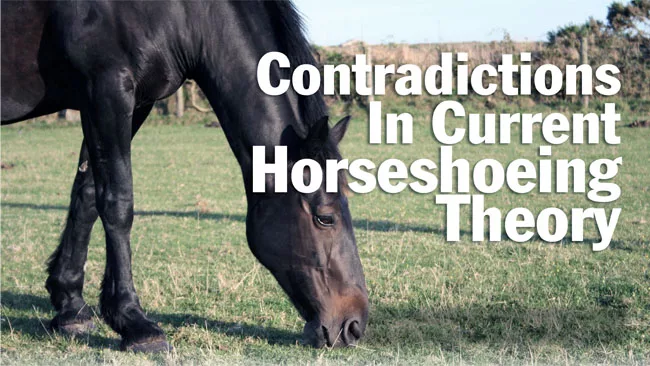American Farriers Journal
American Farriers Journal is the “hands-on” magazine for professional farriers, equine veterinarians and horse care product and service buyers.

Trimming to achieve pastern axis alignment vs. to match angle pairs
Farriers have long been taught many theories to balance a horse’s foot and leg. One common goal of balance is to try to achieve pastern axis alignment (PAA). By definition, PAA is achieved when P1, P2 and P3 are in linear alignment, neither broken backward nor forward.
Another theory of balance is to match angle pairs — that is, match the right front dorsal angle to the left front, and the right hind to the left hind. This theory assumes that horses are designed with matched angle pairs. However, a study I completed in 1996 demonstrated that horses are not necessarily designed with matched angle pairs.
In this particular study of 52 horses, no matched angle pairs were found. Trimming to achieve matched angle pairs was detrimental to hoof soundness; however, trimming to achieve PAA was beneficial to the horse depending upon the trimming methods employed.
These methods include using the live functional sole as a guide for both anterior/posterior and medial/lateral balance, and using hoof mapping techniques to accurately locate the shoe in an anatomically correct location. This is compatible with trimming to achieve PAA.
I first became interested in investigating this theory when I began to notice that trimming to match angle pairs was not producing desirable results. Even when I did everything I could to match the angles of the pairs of feet at a shoeing, by the next reset, the feet had changed back…